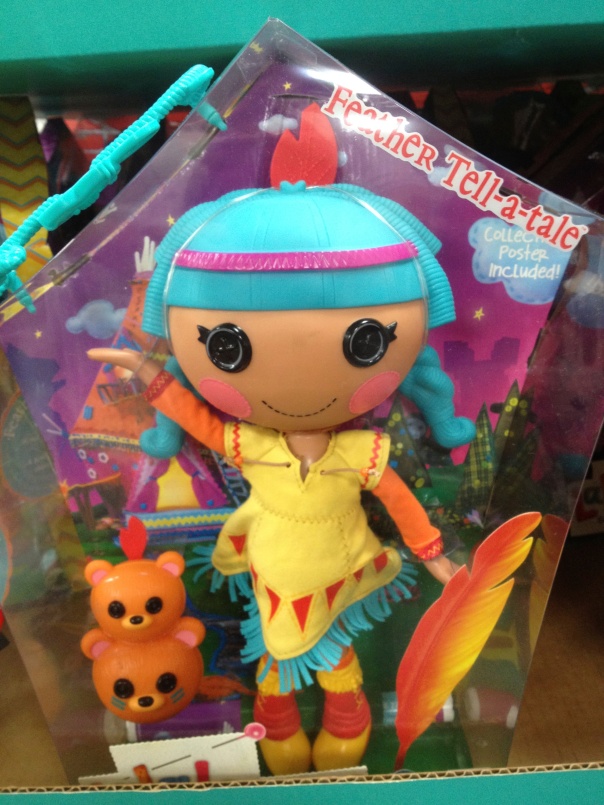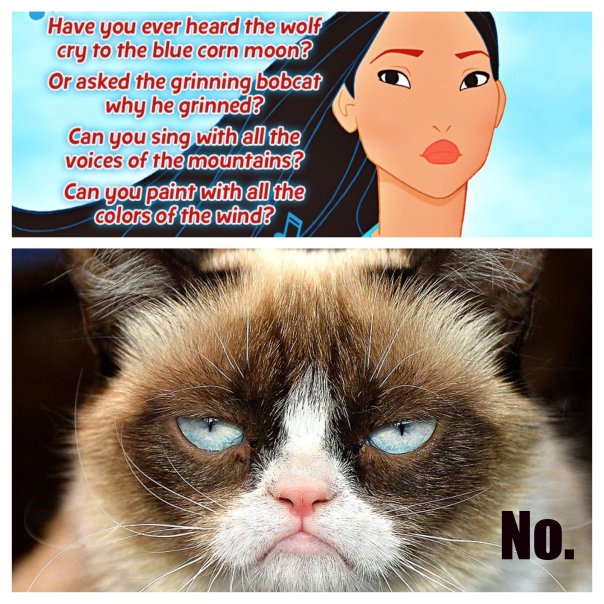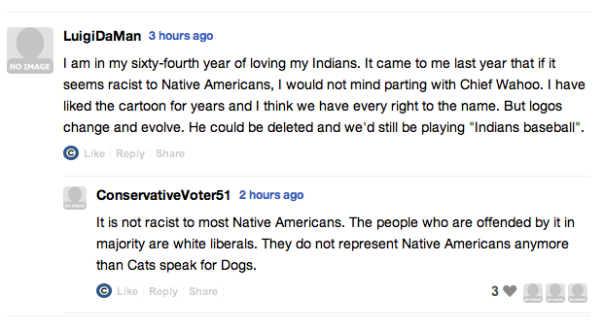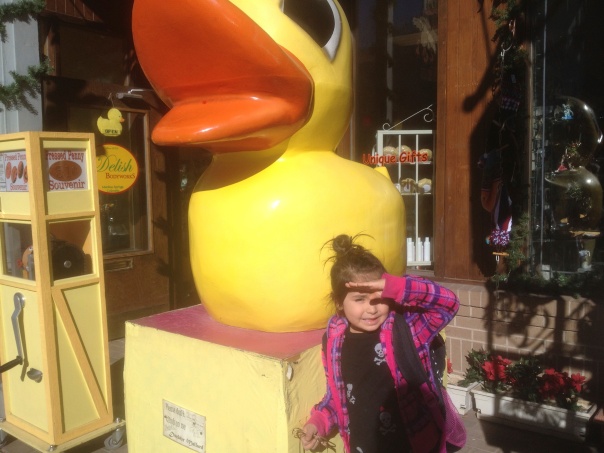I fancy my husband and I as purposeful parents. In addition to the basic necessities (you know, tons of books), we try hard to ensure our child has well-rounded access to her traditional Lakota/Ojibwe cultures, feminist teachings, and spirituality. She picks herself up when she falls, has clear concepts of right and wrong, and – especially because she is an only child – is encouraged to grow her creativity and independence as much as possible utilizing a combination of modern technology, craft projects, and the outdoors. Her teenage self may throw shade my way for using her so often in my blogs, but I think most people who know her would agree my 5-year-old is a well-adjusted child.
But this kind of purposeful parenting is hard and actually pretty tough to keep up on top of all of life’s other stuff (jobs, writing, and Harry Potter marathons, among other things). My husband and I are constantly being tested. Two things happened recently highlighting a need to do better – do more – as parents: (1) My kid came home last Friday and started pointing out every Black person she saw as Dr. Martin Luther King, Jr.; and (2) more and more, she’s been describing the English language as “normal,” as in, “Mom, stop counting in Lakota and say it the normal way.” #crickets

The concept of race didn’t hit me until I was in preschool or kindergarten. Before that, I was raised around my Native extended family – my tiospaye. Lots of cousins and aunts running around my house, or me running around theirs. My normal.
I was definitely the lightest of the familial bunch. With my paternal Irish/French heritage, my dark hair and eyes made my light skin appear translucent. I have clear memories of being teased for my wasicu pigment, and I envied people like my older sister, who to me had/has the most beautiful look to her (inside and out!). So when we’d take baths as young children together, and she would rub her knees raw “to take the brown off,” I was confused. Surely it was worse to be light-skinned – at least in our family circle. She is five years older than I am, and so was exposed to the cruel, systemically racist town that is Rapid City long before I was. The odd turnabout was that my light skin became “the norm” when I entered school.
Despite blending in with the locals, I was still very much set apart. When I was in first grade that god-awful White Savior flick Dances With Wolves came out and EVERYONE at Canyon Lake Elementary School thought they were part Native. “Tatanka means buffalo – I know an Indian word so I’m Indian!” was a popular phrase on the playground. While I looked white, my name (spelled Taté and pronounced tah-tay), personality (quiet, publicly inexpressive), and background (Eagle Butte represent!) were definitely “other” and so even though the noble savage was en vogue, I was an outcast. Looking back on it now, I see quite clearly how the Hollywood appropriation of Native imagery/culture victimized me. Light skin or not, as someone who bucked the stereotype, I was rendered nonexistent.

With my own daughter now, I’m super-sensitive to the messages she receives from entertainment media and her peers, and I make a point to talk to her often about race and fairness and the inequalities around her. And thanks to her extended relatives, she’s exposed to her father’s traditional Ojibwe heritage through her grandma in Ponema, Minn., and to my mom and sister’s multi-cultural families (from Eagle Butte to Omaha).
Still, it’s a struggle to ensure the cultural lessons the family shares with my kiddo aren’t suffocated by the messaging she gets from outside sources, like school. In Sioux Falls, all of my daughter’s education – from daycare to Montessori to kindergarten – exposed her to peers who spoke different languages, dressed in different clothing, and had a range of beautiful skin tones. Sioux Falls isn’t perfect, but it’s a town that tries because it’s forced to with the proximity of reservations, immigration and refugee placement agencies, and an expansive medical community.
Now we live in Manitou Springs – a beautiful, quaint community to be sure, but there’s nothing to force ideas or behavior beyond status quo. It’s a tourist destination, so while it must be open to a diverse crowd, it attracts people with money. It’s housing has inflated “tourism town” costs, so low-income families have few choices beyond living in urban Colorado Springs (which has its share of #smh moments). And it’s a small town, so while it depends on the money of strangers to survive, it still has that drawling “we have a certain way of doing things around here” vibe to it. Oh, yeah – the demographics are roughly 95 percent white.
The point is: Grow up surrounded by diversity and you find that difference is normal and expected and even valued; but grow up in a bubble where everyone looks, prays, and behaves alike, and difference is wearing a scarlet D on your chest. What parent wants the latter for their child?
Here, there are no kids of color in my daughter’s classroom, and apparently the class agreed Friday they “all had white skin” – Mimi said this as she exposed the lovely olive-colored flesh of her arm for me while we walked home and talked about her day. I don’t know if the “we’re all the same” message was teacher-sanctioned, but I do know they watched a movie about MLK and talked about segregation as an abstract concept: “White people wanted white kids to go to one school, and Black kids to go to a different school,” was what my kid was able to tell me she had learned.
I could easily leave it alone. I could say, “At least they’re teaching – something – about Martin Luther King.” Lord knows I don’t remember any civic lessons about him as a kid. But that’s the easy way out. In my humble, tax-paying opinion, schools should be teaching MLK and civil rights lessons daily, maybe along with that pledge they’re so fond of. When just one or two days a year are set aside for Martin Luther King or Native American Day, you begin recognizing every other day as a celebration of White Privilege (“I can speak the language I want, dress how I want, go to school where I want, get a job more easily, make more money, smoke a bowl without risk of serving life in prison if I’m caught, stand my ground, not get pulled over in Arizona, walk down a dark street with a hoodie on and live to tell the tale, knock on doors and ask for help without being shot, and generally have far fewer things to worry about than POC”).

I get the idea that there are some subjects you don’t burden young minds with, but I don’t believe in coddling. And I don’t believe in sugarcoating to make a concept easier to digest. “No,” I told Mimi. “Dr. Martin Luther King, Jr., did so much more for the world. Did you know white people would KILL Black people in some places just for being Black? White people would hang Black people from trees, would hurt Black women and Black kids, and never be punished for it. Martin Luther King helped stop that by teaching us that people shouldn’t live in FEAR of each other.”
We talked about her uncle, who is Black, and her cousins – my niece and nephews – who are Black/Native, and how without people like MLK to fight against injustice and racism, her family would live in fear – be hated – for the color of their skin. And how Native Americans – like her and me and her dad – were also persecuted and treated unfairly, and that MLK’s message of love and fairness and justice and resistance also helped people like us, helped all people who looked or acted different by fighting for laws like the Civil Rights Act.

Now, my kid is 5. I don’t know that I really grasped the enormity that is MLK’s legacy until college and later, so I’m pretty sure my kid won’t be marching or protesting anything except my cooking any time soon. But she’s also not stupid. And she’s aware of the world and notes injustice around her. Like when we walked into the Manitou Springs Public Library the other day, she wondered aloud: “How do people in those wheely chairs get books?” because she nearly tripped down the narrow staircase to the kids’ section. Sure enough, the building’s got the age to warrant a “historic” label, and there is no handicap accessibility. Granted, the whole town rests on one incline or another, and as an able-bodied person I’m dying after walking “up” a few blocks, but you’d think a public library would lead the effort in ADA standards.

Despite the conditioning I’ve given her in diversity advocacy and activism, despite living and breathing Native culture as much as we know how, it’s still very hard to teach our child about people like MLK or Sitting Bull in a way her 5-year-old mind can relate to. Living where we do and living a relatively privileged lifestyle (by privileged I mean not homeless, well fed, access to solid transportation, pursuing goals, educated — nevermind that we currently live in a one-bedroom where I sleep on the couch because we don’t have a bed, and I’m unemployed), her dad and I have to be very purposeful in these lessons.
We must seek out and identify the culture and heritage, as well as the injustice and unfairness, because we live in a community bubble that has no room for being Indian, unless it’s in a historical or economical/tourist context. When she starts identifying as white “like the other kids in class,” it’s time to reassess how we parent. Why? Because today it’s “I look/dress/talk white,” and tomorrow it’s co-opting white privilege in all its “I’m better than you” glory. I fell into this trap in middle and high school, as I think a lot of urban Native youth do, and had a huge identity crisis that didn’t resolve itself until after I began to rediscover my traditional ways as an adult. Today I am closer to my heritage than ever before, and while my teenage woes helped lead to that, I refuse to believe taking a backseat in my child’s diversity/cultural education will benefit her. Just because none of her friends are learning Lakota, doesn’t mean we’re going to stop teaching it. And just because she wants to cut her hair to match the style of the other kids doesn’t mean she’ll get more than a trim.

We talked a lot about Trayvon Martin last year, and we had the pleasure of recently watching Fruitvale Station, but the media doesn’t cover things like domestic violence, voter suppression or youth suicide on reservations, so it’s hard to put a face on indigenous issues that will undoubtedly impact my daughter as a Lakota/Ojibwe woman someday. We point out mascots or appropriation when we see it (so, like, every day), and we talk about why some people might be hurt by those images, but at the end of the night she’s well loved and taken care of with few things to worry about, and her father and I worked hard to make it so. It’s definitely a catch-22: We want to give her the (reasonable) best life has to offer, but in doing so run the risk of her equating the English language with “normal” and being frustrated when we require her to keep her sacred hair long.
So MLK Day has come and gone, but we will continue to honor Dr. King and his legacy daily, just as we honor the legacy of her relatives – through purposeful cultural survival and sovereignty. I might have to start quizzing her every now and then to keep it in the forefront, but when I ask her next time why Dr. King is important, she won’t give some soft story about separate schools or drinking fountains. She’ll be able to express how it relates to her, and how she can relate to – and better – the world around her. That might mean she’s just picking up the trash while we hike, or sending up prayers with sage, or noting the accessibility of public spaces, but at least she’s getting out of the bubble.












